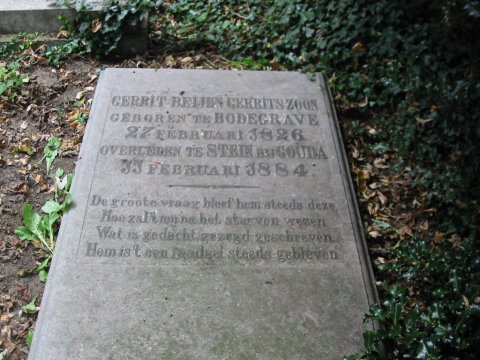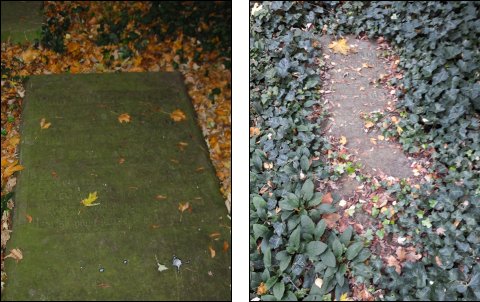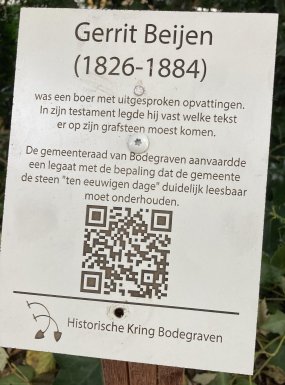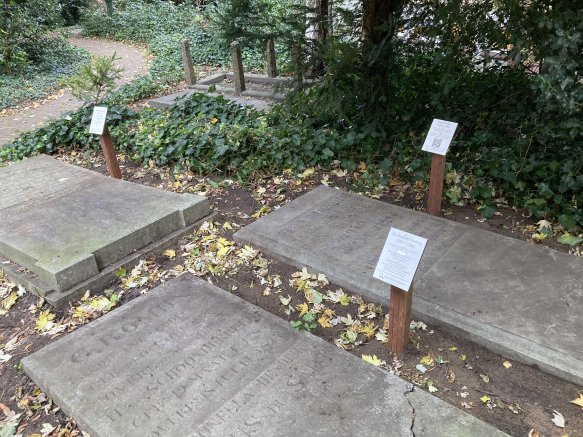| The Beijen/Beyen Family Site by Laurens Beijen |
 |
|
The homepage The overview of the site The next page The previous page |
The list of first names The photo gallery Searching this website Comments or questions |
One of the tombstones behind the Dutch Reformed church in Bodegraven has a striking text.
 The translation is: GERRIT BEIJEN GERRIT'S SON
BORN IN BODEGRAVEN FEBRUARY 27, 1826 DECEASED IN STEIN NEAR GOUDA FEBRUARY 11, 1884 The great question for him was always this How will it be for me after death What has been thought, said, written It always remained a mystery for him Gerrit Beijen (11.21), who has been buried here, was a son of Gerrit Beijen (10.9) and a grandson of Jan Thomas Beijen (9.2), the central character of the Jan Thomas branch. Gerrit was a rich farmer, who remained a bachelor during his whole life. His philosophical streak is shown by the many poems that he has left. Some of the poems can still be found on the walls in the farm in Stein near Gouda where he has lived. Other poems are kept by family members. In 1881 Gerrit made his will in which he laid down in great detail what should be done after his death. One of his desires was to be buried in Bodegraven, the town where he was born. He described exactly the text that had to be put on his tombstone.
After Gerrit's death in 1884 the local council of Bodegraven accepted the bequest and the accompanying conditions. The distribution of foods to poor families continued till about 1967. After that year the money was added to the budget for the yearly day out of the elderly inhabitants of Bodegraven.
 In 2024, the Historical Society Bodegraven took care of the historical cemetery, which was given the name Sint Gallashof. Former chairman Leendert Spijker played a leading role in this. Information signs have been placed at the stones that tell visitors the stories behind the graves.
 |
|
The next page The homepage The overview of the site |
The top of the page Searching this website Comments or questions |
